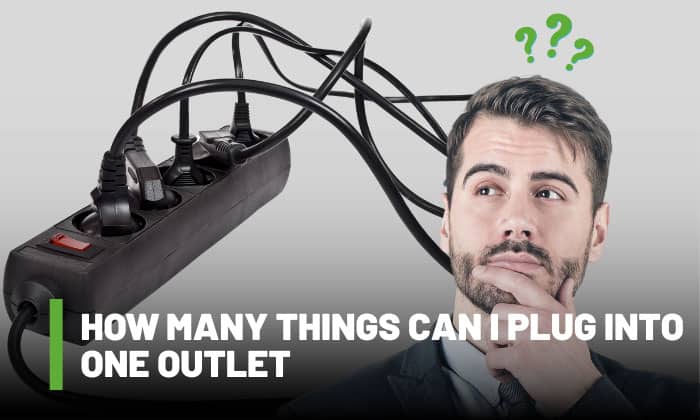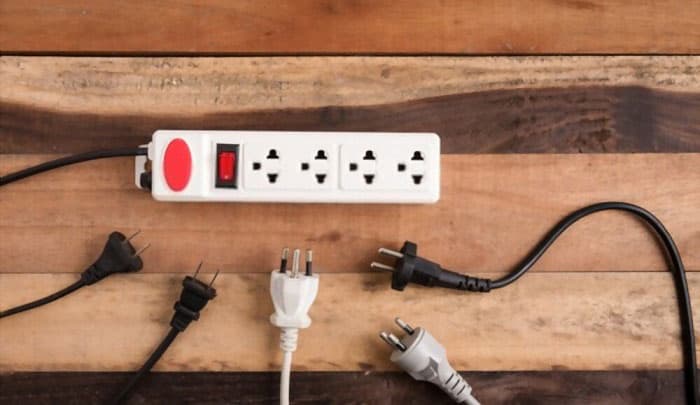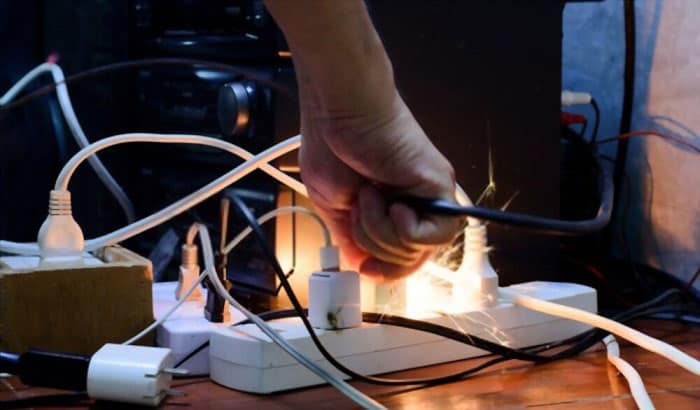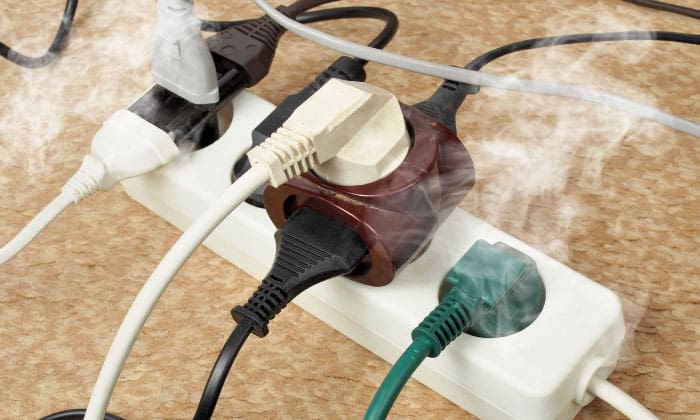We often think that our outlets are not enough and resort to using extension cords (those things with multiple outlets). To make sure that no fire would happen, we frequently ask ourselves, “How many things can I plug into one outlet?”
Technically, one socket can handle 2 – 3 devices without any hazards. Also, we can plug as many things as possible into an outlet using an extension cord. But, a 15 amp and a 20 amp circuit can carry up to 12 amps and 16 amps worth of appliances, respectively.
Table of Contents
How Many Things/Devices Can You Plug in a Single Outlet?
The biggest limiting factor to the number of devices is the maximum current allowed in a general-purpose circuit in residential dwellings.
The National Electric Code, or NEC, prescribes that the maximum cord-and-plug load connected to a receptacle in a branch circuit that supplies 2 or more receptacles should be 12 amps for a 15-amp outlet and 16 amps for a 20-amp outlet.
This rule ensures that the heat generated by the circuit will not severely affect the overcurrent protection device (the device that protects the conductors of the circuit, a.k.a. the circuit breaker). This may be true, especially when there are too many things plugged into one outlet.
How Much Power Can an Outlet Handle?
Since most appliances are rated in terms of watts, it’s easier to view the maximum watts per outlet. We can use this equation whether for a 120v, 240v outlet or even a 600v outlet:
If we have a 12-amp limit for a standard 15-amp 120-volt outlet, then how many watts can an outlet handle would be:
You can plug eleven 130-watt 65” LED TVs in one outlet, but you can only plug one 1300-watt espresso coffee machine. The number of appliances will really depend on the maximum watts.
Using the same equation, we can get the maximum watts for 16-amp limit on a 20-amp circuit:
You can plug more appliances in a 20-amp outlet. You can wiggle around thirteen to fourteen 65” LED TVs on it.
What Happens if I Plug Too Many Things in an Outlet?
The simplest thing that can happen is that the breaker would trip. This protects the conductors in the walls and prevents fire in case too many plugs in one outlet draw too much current. Of course, this assumes that the extension cord is appropriate enough for the current drawn by all the devices.
However, if the extension cord is not used as rated, then the extension cord can get hot enough to cause a fire. Cheap store-bought 16-guage extension cords are commonly available and are not suitable for use in 20-amp outlets, but their use cannot be protected by a circuit breaker.
What’s worse is if you have two extension cords in one outlet.
Not only do you have the possibility of fire, but you can potentially damage your devices through a voltage drop at the end extension cord. Even the Occupational Health and Safety Administration (OSHA) considers it a safety volation.
Signs of Overloading an Outlet
The most obvious sign when you overload an electrical outlet is the tripping circuit breaker. It also means that the circuit breaker is doing its job properly.
But on the side of the extension cord, other signs can be looked at such as the extension cord getting too warm. Other signs might be a burnt plastic smell or sparking and smoking on the outlet or device ends, as well as signs of molten or warped sheathing.
Ways to Avoid Overloading an Outlet
- Make sure that the circuit, including the breaker, is up to code. The circuit breaker does a very good job of protecting your home if too much current flows.
This also ensures that the outlets’ limits are not exceeded (remember the 12-amp limit for 15-amp circuits and the 16-amp limit for 20-amp circuits?).
One of the things you should be aware of is the 80% rule, which indicates that the breakers might trip when loaded exceeding 80% of their current rating.
- Another way is to increase the number of available outlets in the area. This reduces the need for an extension cord in the room. However, it does not resolve the issue about the dangers of power strips.
- A more practical way to prevent overloading is to use power strips with built in circuit breakers in them. These lessen the chance that too many appliances would draw too much current that the power strip can handle.
- Lastly, use the right extension cord for your needs. Don’t plug two surge protectors in one outlet, nor use a power strip with a rating that’s too low for the circuit.
Frequently asked questions
Can I plug 2 power strips in one outlet?
We strongly advise not to connect the two together. Just like connecting two power surge protectors, you have the possibility of voltage drop as the length of the wire increases.
What if I plug the appliance in a single outlet on an individual branch circuit?
If a single outlet is on an individual branch circuit, then the outlet should have a rating not less than that of the branch circuit. This means the outlet is allowed to use 100% of its rating for a non-continuous load, while 80% for continuous load (unless otherwise stated by code).
Conclusion
Multiple appliances can be an electrical hazard. So knowing how many things can I plug into one outlet entirely depends on the maximum amount of current or power on the outlet. For 120 volt branch circuits that supply multiple outlets, each outlet in a 15-amp circuit is 12 amps or 1440 watts, and in a 20-amp circuit is 16 amps or 1800 watts.
Of course, plugging multiple items in an outlet runs the risk of overloading. So using an extension cord properly (using the right size and using the right length) ensures a safe supply of electricity to our appliances.

I am Edwin Jones, in charge of designing content for Galvinpower. I aspire to use my experiences in marketing to create reliable and necessary information to help our readers. It has been fun to work with Andrew and apply his incredible knowledge to our content.




